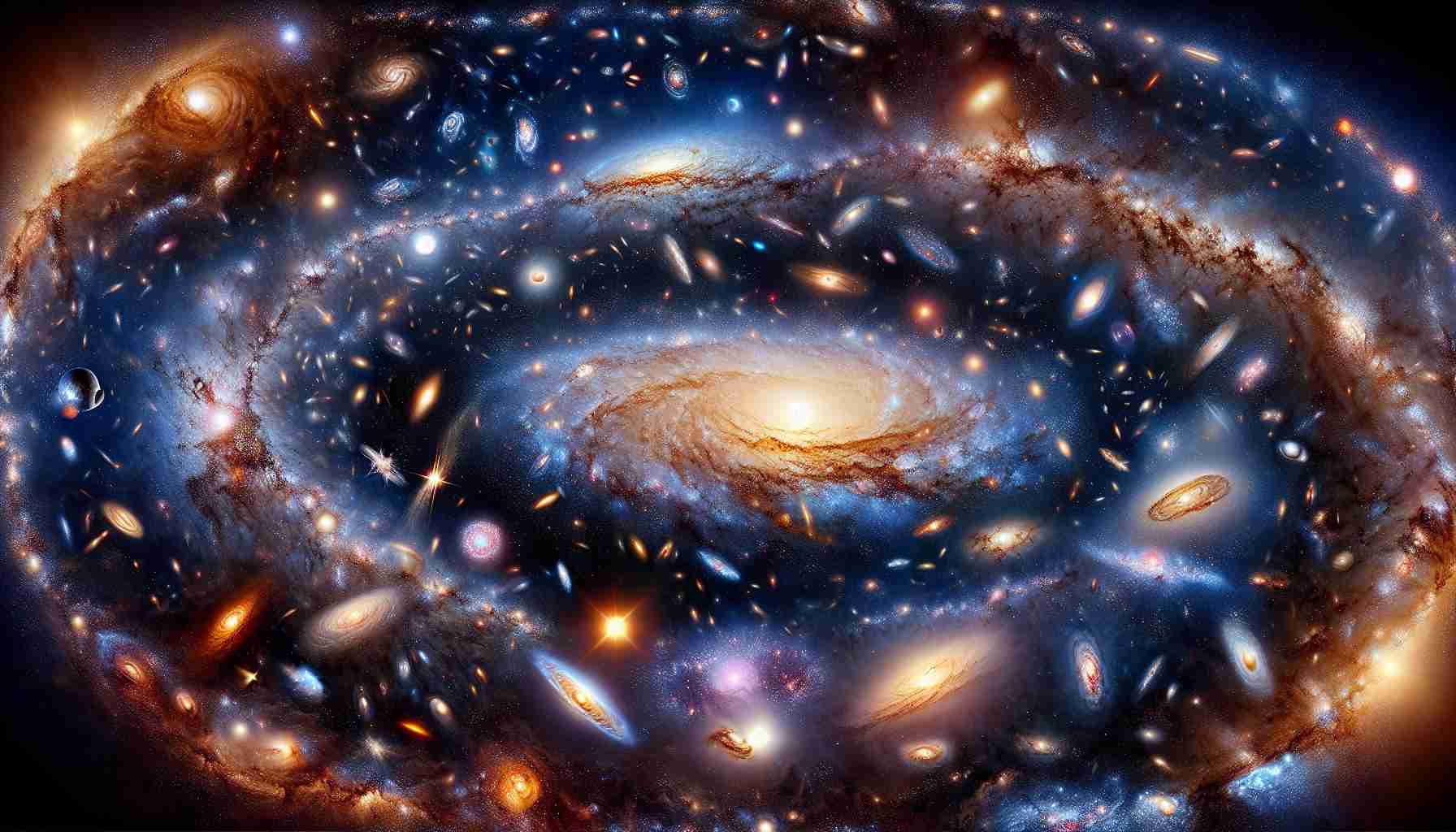- The SAGA Survey studied 101 galaxies similar to the Milky Way, revealing significant differences in their characteristics.
- Findings indicate that the Milky Way may be an outlier, particularly in terms of its satellite systems and star formation.
- Over 370 satellite galaxies were identified, showcasing diverse behaviors among galaxies similar to the Milky Way.
- Many nearby satellites of the Milky Way do not form stars actively, possibly influenced by dark matter dynamics.
- This research challenges current models of galaxy evolution and positions the Milky Way as a complex example for further study.
- Understanding these cosmic phenomena is crucial for unraveling the mysteries of dark matter and the evolution of galaxies.
Dive into the cosmic wonders of the universe as new research from the groundbreaking SAGA Survey opens a portal to understanding the Milky Way. By examining 101 galaxies similar in mass to our own, astronomers have unveiled striking differences that highlight our galaxy’s unique characteristics and deepen our comprehension of galaxy formation.
The Milky Way, a spectacular spiral of stars, serves as a vital reference point for cosmic studies. Yet, as scientists peer beyond our doorstep, they find that the Milky Way may be more like an outlier than a standard. The SAGA Survey’s investigations suggest our galaxy differs significantly in satellite systems and star formation patterns, posing intriguing questions about the effects of dark matter—the enigmatic substance that constitutes 85% of the universe’s mass.
This ambitious study unearthed over 370 satellite galaxies orbiting other Milky Way-like systems, indicating variations in how these cosmic neighborhoods function. Notably, the Milky Way’s own Large and Small Magellanic Clouds are among its prized satellite companions, but most of its nearby satellites are not actively forming stars, potentially due to the gravitational embrace of dark matter.
The findings challenge established models of galaxy evolution, marking the Milky Way as a complex physics laboratory in the cosmos. As astronomers continue to explore these stellar siblings, they strive to unravel the captivating puzzles of our galaxy’s formation.
The key takeaway? The Milky Way is a wonderfully unique entity in the cosmos, and through comparisons with other galaxies, we inch closer to understanding the mysteries of dark matter and galaxy evolution—a cosmic adventure that continues to unfold!
Unlocking the Milky Way’s Secrets: Insights from the SAGA Survey
New Insights from the SAGA Survey
Recent research from the SAGA (Satellite Galaxies of z < 0.1) Survey has brought forth a wealth of new information regarding the Milky Way and its galactic cousins. By examining 101 galaxies similar in mass to our own, astronomers have identified significant variations that highlight the Milky Way's distinctive features.
# Features of the Milky Way
– Satellite Galaxies: The study has categorized over 370 satellite galaxies orbiting Milky Way-like systems, revealing diverse characteristics in their satellite systems.
– Star Formation Patterns: Unlike the Milky Way, many nearby galaxies have satellites that are not forming new stars, prompting discussions on the influence of dark matter.
– Dark Matter's Role: As dark matter makes up about 85% of the universe's mass, its effects on galaxy formation and behavior continue to be a focal point of research.
# Limitations and Challenges
– Galactic Comparisons: While the SAGA Survey provides valuable insights, it also illustrates the complexities in comparing different galaxies, as the Milky Way may be an outlier.
– Understanding Dark Matter: The influence of dark matter on satellite galaxy behavior and star formation is still an open question, requiring further investigation.
Emerging Trends and Innovations
– New Research Techniques: Advances in technology and observational methods are enabling astronomers to study galaxies with unprecedented detail, revealing subtle nuances in their behaviors.
– Galactic Evolution Models: The findings challenge and refine existing models of galaxy evolution, highlighting the need for updated theories that encompass these new observations.
Market Forecasts and Insights
As the field of astronomy continues to evolve, the demand for advanced telescopes and data analysis tools is expected to grow. This surge in interest could spur innovations in both terrestrial and space-based observatories.
Most Important Related Questions
1. What makes the Milky Way unique compared to other galaxies?
The Milky Way exhibits unique characteristics, particularly in its satellite system and star formation patterns, distinguishing it from other similarly-sized galaxies in the universe.
2. How does dark matter influence galaxy formation?
Dark matter plays a crucial role in shaping galaxies by influencing the gravitational interactions that govern the behavior and formation of stars and satellite galaxies.
3. What are the future implications of the SAGA Survey's findings?
The insights gained from the SAGA Survey could lead to a re-evaluation of current models of galaxy evolution and enhance our understanding of the cosmos, potentially unlocking new pathways in astronomic research.
For more information, visit NASA or ESA to explore further advancements in astronomy and cosmic studies.













